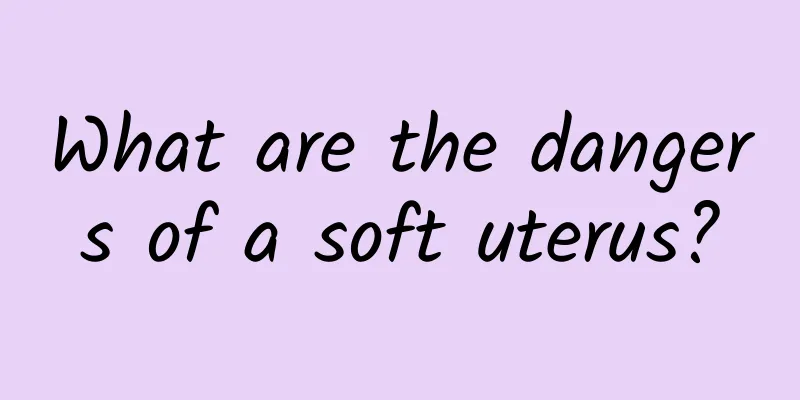How to treat hypoxic-ischemic encephalopathy in infants

|
The occurrence of hypoxic-ischemic encephalopathy in infants requires special attention in treatment. The methods include general drug treatment control, and special attention should be paid to controlling the increase in intracranial pressure. At the same time, the use of drugs should be based on the doctor's advice. (I) General treatment: ① Correct hypoxemia and hypercapnia, use artificial respirator when necessary ② Correct hypotension: ensure adequate cerebral blood perfusion, usually dopamine 5-10μg/kg per minute intravenous drip ③ Supply enough glucose to meet the energy metabolism needs of brain tissue: can be given at 6-8mg/kg per minute ④ Correct metabolic acidosis: sodium bicarbonate 2-3mEg/kg 10% glucose diluted and slowly dripped intravenously ⑤ When blood calcium is lower than 1.9mmol/L, intravenous calcium gluconate can be used ⑥ Appropriately limit fluid intake: daily amount 50-60ml/kg infusion rate within 4ml/kg/h (II) Control of convulsions : Sodium phenobarbital is the first choice. The first dose is 15-20 mg/kg. If the convulsions do not stop, 5 mg/kg can be added 1-2 times with an interval of 5-10 minutes. The total load is 25-30 mg/kg. From the second day, the maintenance dose is 4-5 mg/kg per day (one or two intravenous injections). It is best to monitor the blood concentration. Stop the drug one week after the convulsions stop. If the convulsions occur frequently, diazepam or chloral hydrate can be added. . (III) Control of increased intracranial pressure : Dexamethasone 0.5 mg/kg and furosemide 1 mg/kg are given intravenously for 4-6 hours, and then repeated for 2-3 times. If the intracranial pressure is still high, mannitol 0.25-0.5 g/kg is given intravenously with intervals of 4-6 hours. The goal is to significantly reduce the intracranial pressure within 48-72 hours. (iv) Central nervous system stimulants, etc.: Cytochrome C triphosphate uridine coenzyme A, etc. can be used for daily intravenous drip until the symptoms are significantly improved; 100-125 mg/day of citicoline can also be diluted and given intravenously. Starting from the second day after birth, the intravenous drip should be given once a day; 5 ml of cerebrolysin diluted with normal saline can be given intravenously to improve brain tissue metabolism. Treatment must be continued until the symptoms disappear completely. Moderate HIE should be treated for 10-14 days, and severe HIE should be treated for 14-21 days or longer. The earlier the treatment starts, the better. Generally, treatment should be started within 24 hours after birth, and various pathological factors after birth should be avoided as much as possible to aggravate brain damage. 7. Prognosis Some factors leading to poor prognosis include: ① severe HIE; ② the appearance of brainstem symptoms: such as changes in pupils and breathing; ③ frequent convulsions that cannot be controlled by drugs, and the symptoms have not disappeared after one week of treatment; ④ after two weeks of treatment, the EEG still has moderate or above changes; ⑤ brain B-ultrasound and brain CT show grade III-IV intraventricular hemorrhage, large areas of hypoxic-ischemic changes in the brain parenchyma, especially those with cystic cavities after 1-2 weeks. |
<<: Is acupuncture effective in treating cerebral palsy?
>>: Chinese medicine for treating brain tumors
Recommend
Drugs to prevent cerebral thrombosis
Cerebral thrombosis is a very common disease amon...
How long does it take for Maca to take effect?
Maca is a kind of organic matter produced in the ...
What to do if you have skeletal dysplasia? You can actually grow taller this way
The harm caused by skeletal maldevelopment to chi...
The efficacy and function of Eucommia bark
Eucommia ulmoides is a very common Chinese medici...
What are the effects and functions of rose oil?
The efficacy and function of rose oil is to regul...
What essential oils can help you sleep better?
Nowadays, people's sleep quality is getting w...
What causes nipple pain after miscarriage?
Many female friends will experience nipple pain a...
What is the meridian on the outside of the calf?
There are two main meridians on the outside of th...
What causes toe pain?
Toe pain is a phenomenon that many people experie...
The harm of applying fluocinolone on the face
When our skin has some problems, especially skin ...
What diseases can biochemical blood tests detect?
Biochemical examination is a relatively routine e...
How long after a painless abortion can I wash my hair?
Painless abortion is a relatively common method o...
How long does it take to recover from laser fat removal?
For more stubborn fat particles, they can be trea...
Alcohol-induced dementia
Alcoholic dementia is a disease of human beings, ...
What causes bruising of the skin?
Many people will find that purple bruises appear ...









